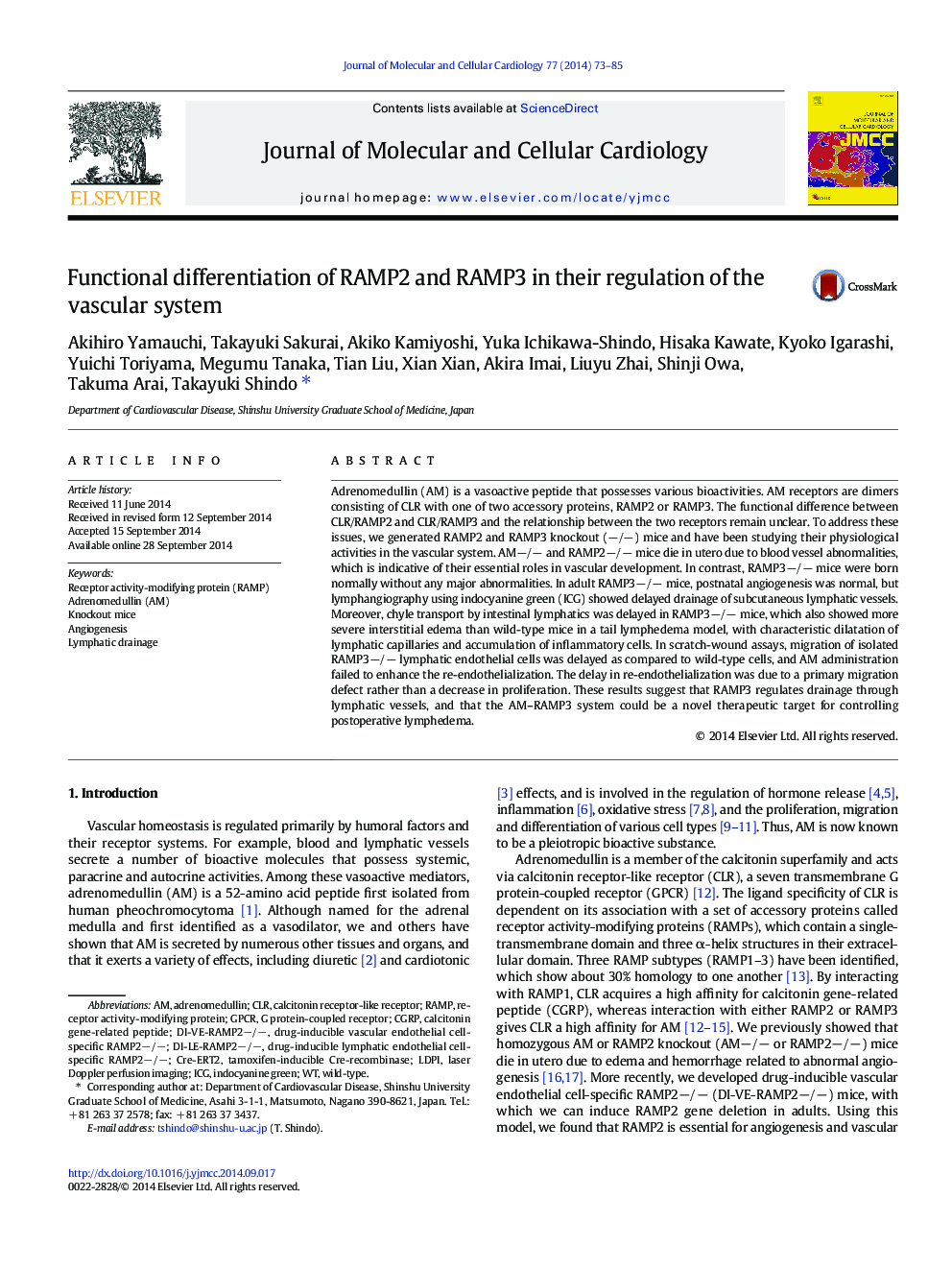| Article ID | Journal | Published Year | Pages | File Type |
|---|---|---|---|---|
| 8474554 | Journal of Molecular and Cellular Cardiology | 2014 | 13 Pages |
Abstract
Adrenomedullin (AM) is a vasoactive peptide that possesses various bioactivities. AM receptors are dimers consisting of CLR with one of two accessory proteins, RAMP2 or RAMP3. The functional difference between CLR/RAMP2 and CLR/RAMP3 and the relationship between the two receptors remain unclear. To address these issues, we generated RAMP2 and RAMP3 knockout (â/â) mice and have been studying their physiological activities in the vascular system. AMâ/Â â and RAMP2â/Â â mice die in utero due to blood vessel abnormalities, which is indicative of their essential roles in vascular development. In contrast, RAMP3â/Â â mice were born normally without any major abnormalities. In adult RAMP3â/Â â mice, postnatal angiogenesis was normal, but lymphangiography using indocyanine green (ICG) showed delayed drainage of subcutaneous lymphatic vessels. Moreover, chyle transport by intestinal lymphatics was delayed in RAMP3â/Â â mice, which also showed more severe interstitial edema than wild-type mice in a tail lymphedema model, with characteristic dilatation of lymphatic capillaries and accumulation of inflammatory cells. In scratch-wound assays, migration of isolated RAMP3â/Â â lymphatic endothelial cells was delayed as compared to wild-type cells, and AM administration failed to enhance the re-endothelialization. The delay in re-endothelialization was due to a primary migration defect rather than a decrease in proliferation. These results suggest that RAMP3 regulates drainage through lymphatic vessels, and that the AM-RAMP3 system could be a novel therapeutic target for controlling postoperative lymphedema.
Keywords
Related Topics
Life Sciences
Biochemistry, Genetics and Molecular Biology
Cell Biology
Authors
Akihiro Yamauchi, Takayuki Sakurai, Akiko Kamiyoshi, Yuka Ichikawa-Shindo, Hisaka Kawate, Kyoko Igarashi, Yuichi Toriyama, Megumu Tanaka, Tian Liu, Xian Xian, Akira Imai, Liuyu Zhai, Shinji Owa, Takuma Arai, Takayuki Shindo,
